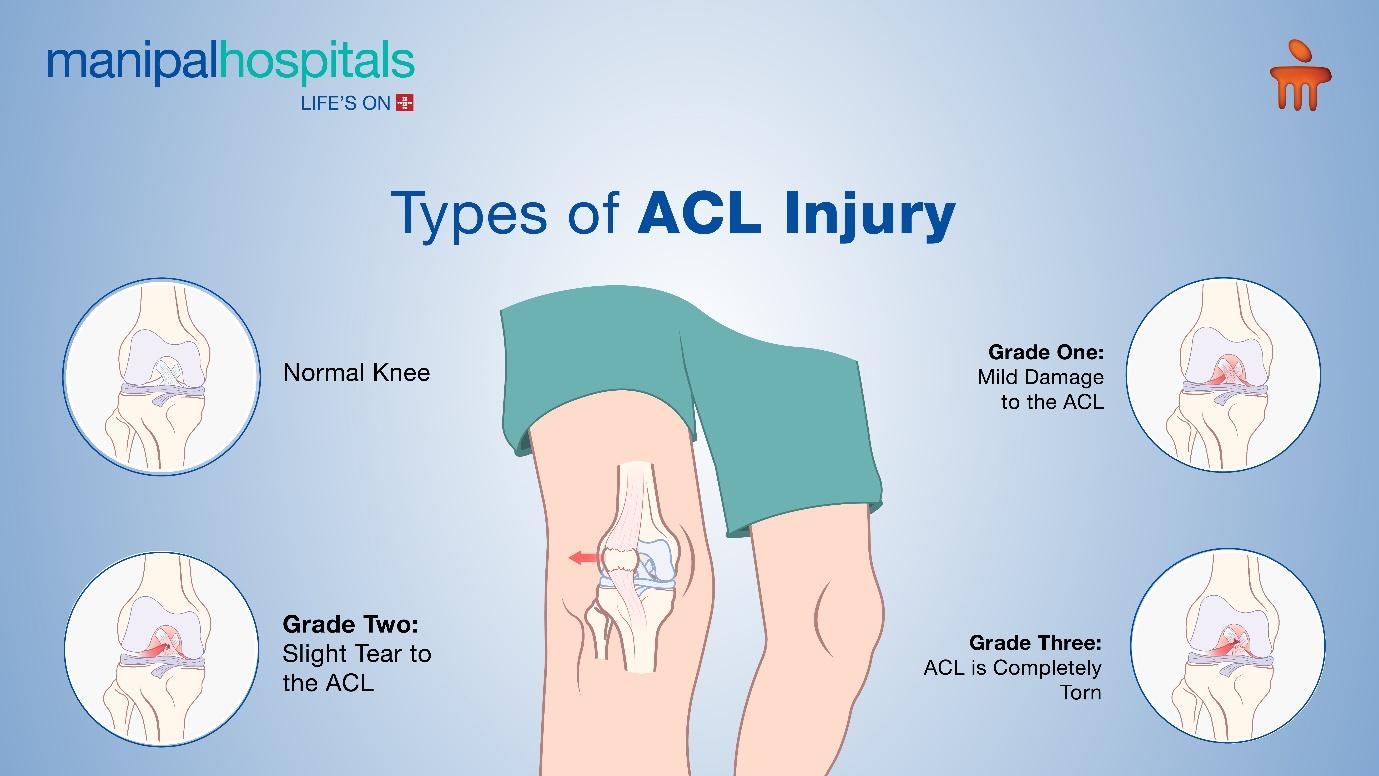
Our joints are the body's finely engineered hinges - comprising bones, ligaments, tendons, and muscles - that enable us to move freely and smoothly. Among them, the knee is the primary joint that supports the body's weight while powering our every step and physical activity. However, the knee is extremely vulnerable to injuries and strains due to its central role in locomotion and sports activities. One such injury occurs when there is damage to the anterior cruciate ligament (ACL), a component of the knee.
Synopsis
What is ACL?
The anterior cruciate ligament (ACL) connects the thigh bone (femur) to the shin bone (tibia). Along with the posterior cruciate ligament, the ACL stabilises the knee joint. Excessive force can twist or push the knee beyond its natural limits which can tear or injure the ACL. ACL injury is more common among athletes.
What causes ACL injuries?
Any jarring motion that puts too much force on the knee causes an ACL injury. Some of these motions are common in sports activities and they look like:
- Suddenly stopping and changing directions
- Pivoting with the foot planted
- Awkwardly jumping and falling
- Blows to the knee (like a football hitting the knee)
- Road traffic accidents
Types of ACL Injuries

We treat patients depending on the severity of the ACL injury. They are of three grades based on the extent of damage and strain on the ligament:
- Grade One: The ACL is slightly damaged and overstretched but its structure remains intact, keeping the knee joint together.
- Grade Two: A rare kind with a slight tear and loosening up of the ACL from being stretched too much.
- Grade Three: This type occurs when the ACL is completely torn into two pieces.
Symptoms of ACL Injuries
Experiencing an ACL injury feels (or sounds) like a pop along with other symptoms like:
- The knee swelling up within the first 24 hours of injury
- An inability to bend the knee to its full extent
- Sense of giving away of the knee
- Unable to put weight on the knee
- Soreness and a dull ache in the knee
Diagnosing ACL Injuries
Before an ACL ligament surgery, we perform a complete physical examination by checking how the joint feels and the patient’s ability to move. We also do imaging tests like X-rays, and MRIs to rule out bone fractures and to know ligament's damage.
Treating ACL Injuries
Addressing an ACL injury is crucial as it affects the surrounding tissues and further weakens the knees. Ligament injury surgery usually depends on the grade of the ACL injury.
- If the injuries are lower grade, RICE therapy (rest, ice, compression and elevation) with limited physical activity is suggested.
- To reduce swelling and pain simple analgesics are used.
- Other treatment options include wearing a brace to stabilise the knee.
- Physical therapy is also done to ensure that the knee moves properly.
- If the ACL injury is severe, it calls for reconstruction surgery.
An ACL injury does not heal by itself, but one can live with it. However, this is not advised for patients who are symptomatic.
ACL Reconstruction Surgery
It is an arthroscopic procedure which avoids making long incisions and helps to return to normal activities quickly. Consider visiting a healthcare provider as soon as you injure your knee. The Orthopaedic Department at Manipal Hospitals, Vijayawada will help formulate a treatment plan based on the extent of your ACL injury.
FAQ's
You can walk with a torn ACL, however, limit your physical activity especially if your knee hurts. Increasing stress on an injured ACL can make it worse.
Recovery time varies depending on the severity of the injury and the treatment approach. Recovery may take several weeks to months in non-surgical treatment. The patient is allowed gradually to return to activities which may take up to 6 months for playing sports after a reconstruction surgery.
This depends on your progress in physical therapy and the ability to regain strength, stability, and range of motion in the affected knee.
There’s a small chance you’ll tear the same ACL again in the future, even if you have surgery to repair it. Fewer than 10% of people who have a torn ACL tear that same ACL again if they sustain injury to knee.
While not all ACL injuries are preventable, proper warm-up, strength training, and technique training can reduce the risk, especially in athletes involved in high-risk sports like basketball, soccer, and skiing.



















 4 Min Read
4 Min Read









.png)





